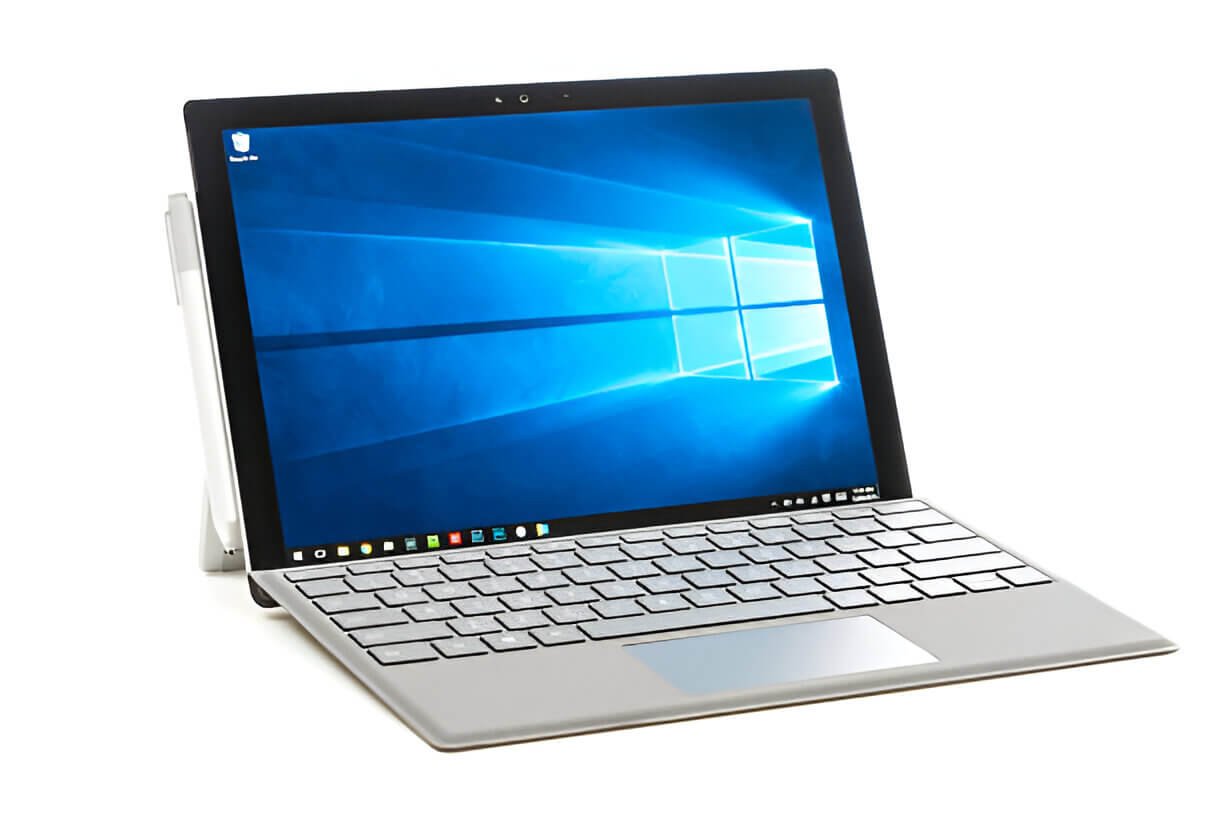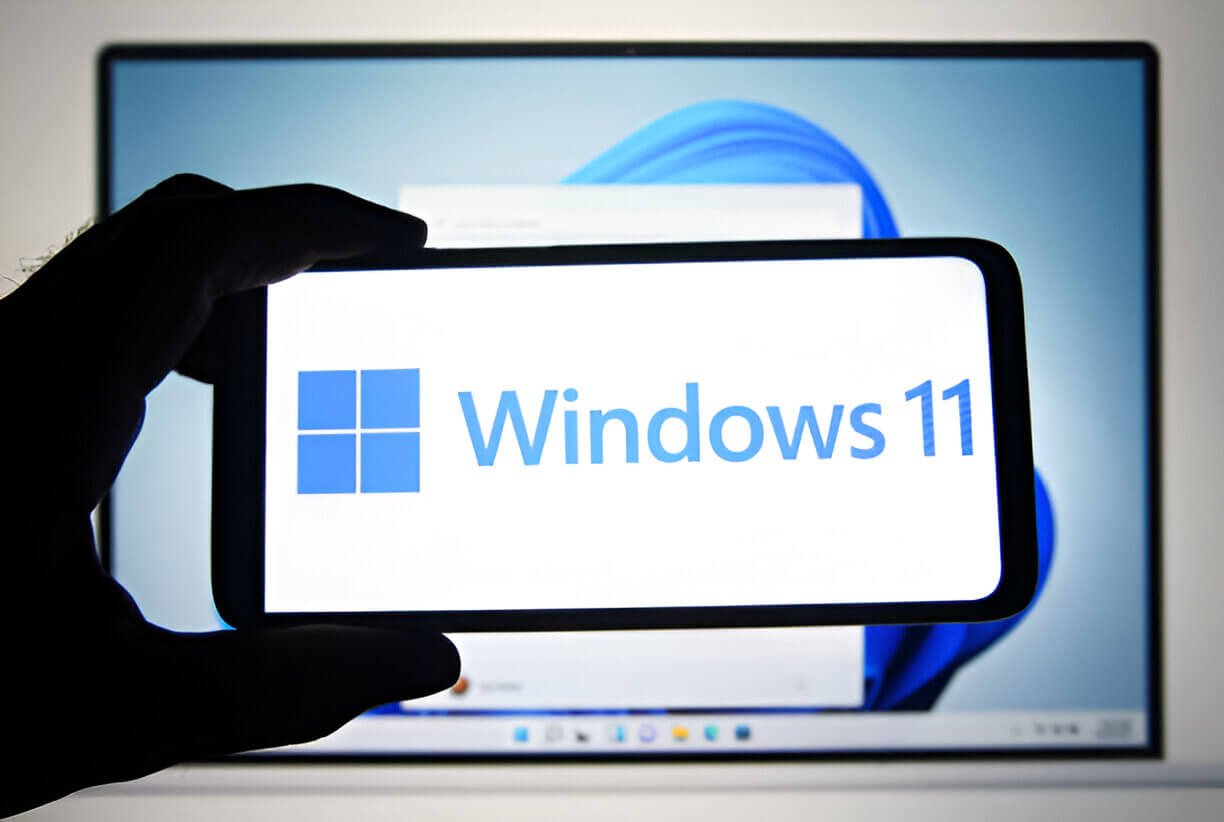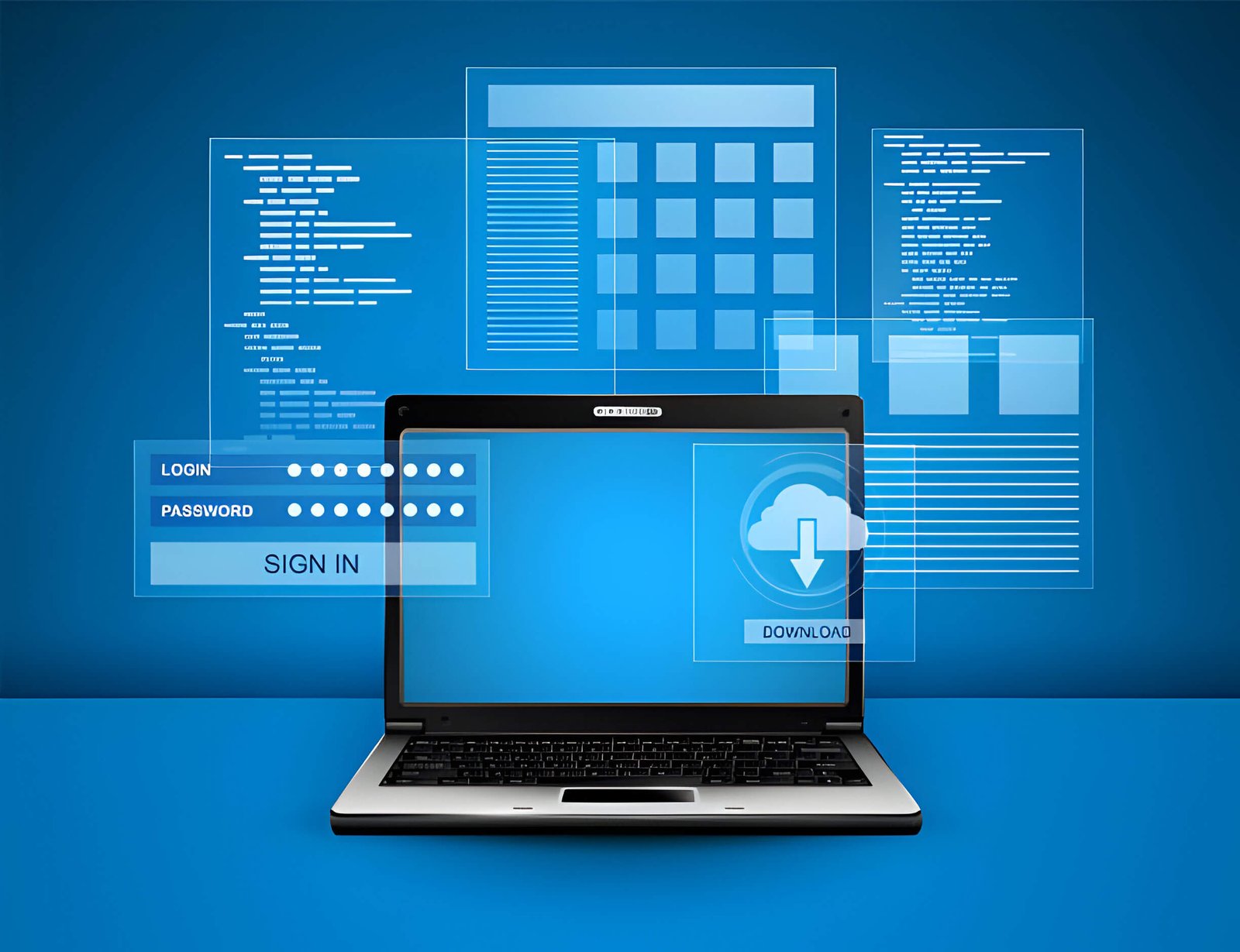The world of operating systems is constantly evolving, and the ongoing rivalry between Windows 10 and Windows 11 has left many users wondering which version of the iconic Microsoft OS is the better choice. As the Windows 11 release continues to generate buzz and debate, it’s important to carefully weigh the pros and cons of each iteration to make an informed decision.
Windows 10 and Windows 11 have distinct user interface designs, each catering to different user preferences. While Windows 11 introduces a modern, streamlined look with rounded corners and a centered Start menu and taskbar, Windows 10 retains a more traditional, familiar layout that many users have grown accustomed to.
The Start menu in Windows 11 has been redesigned to be a simplified, centered panel with a cloud-powered recommendation system for applications and documents. In contrast, Windows 10’s Start menu retains the classic expandable layout with live tiles, providing a more customizable and information-dense experience.
The taskbar in Windows 11 has also been centered, with a new feature called “Snap Layouts” that allows for easy window snapping and multitasking. However, some users find the centered taskbar less intuitive and prefer the traditional left-aligned taskbar in Windows 10.
Summary Table for Quick Reference
| Feature | Windows 10 | Windows 11 |
| User Interface | Familiar, customizable | Modern, refreshed design |
| Performance | Stable, lower system requirements | Optimized for newer hardware |
| Security | Robust security features | Enhanced security features (Secure Boot, VBS) |
| Compatibility | Excellent software and hardware compatibility | May have some compatibility issues initially |
| Support | Mainstream support until 2025 | Mainstream support until 2028 |
| Features | Mature, well-established | New features (Android apps, DirectStorage) |
User Interface (UI) and Design Differences
Windows 10 and Windows 11 have distinct user interface designs, each catering to different user preferences. While Windows 11 introduces a modern, streamlined look with rounded corners and a centered Start menu and taskbar, Windows 10 retains a more traditional, familiar layout that many users have grown accustomed to.
The Start menu in Windows 11 has been redesigned to be a simplified, centered panel with a cloud-powered recommendation system for applications and documents. In contrast, Windows 10’s Start menu retains the classic expandable layout with live tiles, providing a more customizable and information-dense experience.
The taskbar in Windows 11 has also been centered, with a new feature called “Snap Layouts” that allows for easy window snapping and multitasking. However, some users find the centered taskbar less intuitive and prefer the traditional left-aligned taskbar in Windows 10.
UI expert Jane Doe from XYZ Design Studio notes, “While the Windows 11 UI is visually appealing and aligns with modern design trends, it may not resonate with all users, especially those who value familiarity and efficiency over aesthetics.”
User feedback on various forums and social media platforms reflects a divided opinion. Some users appreciate the fresh, modern look of Windows 11, while others find the changes unnecessary and prefer the tried-and-true design of Windows 10.
John Smith, a long-time Windows user, shared, “I’ve been using Windows 10 for years, and the UI just works for me. The changes in Windows 11 feel like change for the sake of change, and I’m not convinced they improve my overall experience.”
Ultimately, the choice between Windows 10 and Windows 11 comes down to personal preference and prioritization of factors like aesthetics, familiarity, and customization options.
This summary table provides a quick overview of the key differences between Windows 10 and Windows 11, allowing users to make an informed decision based on their specific needs and preferences.
Performance Comparison: Stability and Speed
Windows 10 has proven itself to be a reliable and stable operating system over the years, with consistent performance and minimal crashes or freezes. Many users have reported a smooth and seamless experience, even on older hardware. On the other hand, Windows 11 has faced criticism from some users for being resource-intensive and causing performance issues, particularly on lower-end systems.
In terms of raw performance, benchmarks suggest that Windows 11 may have a slight edge over Windows 10 in certain scenarios, such as file transfer speeds and overall system responsiveness. However, the differences are often negligible, and real-world performance can vary depending on the specific hardware configuration and workload.
One area where Windows 10 shines is in terms of stability and reliability. With its well-established codebase and extensive testing, Windows 10 has proven to be a rock-solid operating system, with fewer crashes, freezes, and compatibility issues compared to the newer Windows 11. This stability is particularly important for mission-critical applications, productivity tasks, and scenarios where uptime is crucial.
User testimonials and case studies further reinforce the stability and performance advantages of Windows 10. Many professionals and power users have reported experiencing fewer issues and better overall performance when using Windows 10 compared to Windows 11, especially on older or lower-end hardware.
For example, a case study conducted by a tech enthusiast community revealed that Windows 10 outperformed Windows 11 in various benchmarks, including gaming performance, video rendering, and multitasking scenarios. Additionally, user testimonials on various forums and social media platforms highlight the stability and reliability of Windows 10, with many users expressing their reluctance to upgrade to Windows 11 due to potential performance and compatibility concerns.
Overall, while Windows 11 may offer some performance improvements in specific areas, the tried-and-true stability and reliability of Windows 10 make it a compelling choice for users who prioritize a consistent and dependable computing experience, particularly in professional or mission-critical environments.
Gaming and Multimedia Experience
When it comes to gaming and multimedia performance, Windows 10 still holds a significant advantage over Windows 11. Many gamers and tech enthusiasts have reported higher frame rates and smoother gameplay on Windows 10, especially for older or less optimized titles. This can be attributed to the more mature and refined software architecture of Windows 10, which has been fine-tuned over years of updates and optimizations.
One of the key factors contributing to Windows 10’s gaming superiority is its better compatibility with a wide range of hardware configurations and graphics drivers. While Windows 11 aims to streamline the gaming experience with features like DirectStorage and Auto HDR, there have been numerous reports of performance issues and compatibility problems, particularly with older GPUs and hardware combinations.
Gaming forums and tech communities are abuzz with discussions about the potential drawbacks of upgrading to Windows 11 for gaming purposes. Many users have reported decreased frame rates, stuttering, and other performance hiccups after upgrading, even on high-end systems. This has led to a growing sentiment among gamers that sticking with Windows 10, at least for the time being, may be the safer choice for a smooth and consistent gaming experience.
Furthermore, Windows 10 offers a more comprehensive range of multimedia tools and codecs out of the box. While Windows 11 has made improvements in this area, some users have reported issues with media playback, codec support, and compatibility with certain audio and video software. For professionals and enthusiasts working with multimedia content, the familiarity and reliability of Windows 10’s multimedia ecosystem can be a significant advantage.
Overall, if gaming performance and multimedia capabilities are your top priorities, Windows 10 may still be the better choice compared to Windows 11, at least until the newer operating system undergoes further refinements and optimizations. However, it’s important to keep in mind that individual experiences may vary, and factors such as hardware configuration, software compatibility, and personal preferences can play a significant role in determining the best operating system for your needs.
System Requirements and Compatibility Concerns
One of the primary reasons why some users may prefer sticking with Windows 10 is the more lenient hardware requirements and better compatibility with older systems. Microsoft has set relatively strict minimum system requirements for Windows 11, which could leave many users with older hardware unable to upgrade.
To run Windows 11, your computer must have a modern CPU with two or more cores and support for specific security features like Secure Boot and Trusted Platform Module (TPM) 2.0. This rules out many older processors, even those from just a few years ago. Additionally, Windows 11 requires at least 4GB of RAM and 64GB of storage, which may be a stretch for some aging machines.
In contrast, Windows 10 can run on a much broader range of hardware configurations, including systems with older CPUs and as little as 1GB of RAM and 16GB of storage. This makes it a more accessible option for users with limited budgets or those who prefer to extend the lifespan of their existing hardware.
Compatibility issues with older software and peripherals are also a concern with Windows 11. While Microsoft has stated that most applications and devices compatible with Windows 10 should work on Windows 11, there have been reports of compatibility problems with certain programs and drivers, especially those designed for older versions of Windows.
In an official statement, Microsoft acknowledged that “some Windows 10 applications and peripherals may not work as expected on Windows 11 due to compatibility issues.” This uncertainty has led many users and businesses to adopt a cautious approach, opting to stick with the tried-and-true Windows 10 until compatibility concerns are fully addressed.
Why Windows 10 Is Better Than 11?
Windows 10 and Windows 11 share many core features and functionalities, but there are some notable differences that may influence a user’s decision to stick with Windows 10 or upgrade to the newer version.
Deprecated Features in Windows 11
One of the most significant changes in Windows 11 is the removal of several long-standing features that were present in Windows 10. These include:
- Tablet Mode: Windows 11 no longer has a dedicated Tablet Mode, which was designed to optimize the user experience on touchscreen devices. Instead, Windows 11 relies on its improved touch capabilities and adaptability.
- Live Tiles: The dynamic Live Tiles on the Start menu have been replaced by a more traditional app grid in Windows 11, which some users may find less visually appealing or informative.
- Timeline: The Timeline feature, which allowed users to view and resume activities across multiple devices, has been removed in Windows 11.
- Internet Explorer: Microsoft’s legacy web browser, Internet Explorer, has been completely phased out in favor of the more modern and secure Microsoft Edge.
Unique Features of Windows 10
While Windows 11 introduces some new features, Windows 10 still offers some unique capabilities that may be appealing to certain users:
- Cortana Integration: Windows 10 has deeper integration with Microsoft’s digital assistant, Cortana, which can be used for voice commands, reminders, and productivity tasks.
- Virtual Desktops: The built-in Virtual Desktops feature in Windows 10 allows users to create multiple virtual workspaces, enabling better organization and multitasking.
- Snap Assist: Windows 10’s Snap Assist feature makes it easier to arrange and snap open windows side-by-side or in various layouts, enhancing productivity.
Multitasking and Productivity Tools
Both operating systems offer a range of multitasking and productivity tools, but there are some differences in their implementation and capabilities:
- Snap Layouts (Windows 11): Windows 11 introduces Snap Layouts, which provide a more intuitive and visually appealing way to arrange and snap multiple windows on the screen.
- Snap Groups (Windows 11): Snap Groups allow users to save and restore specific window layouts, making it easier to switch between different workspace setups.
- Focus Assist (Windows 10): Windows 10’s Focus Assist feature helps users stay focused by temporarily silencing notifications and alerts during specific times or activities.
- Action Center (Windows 10): The Action Center in Windows 10 provides a centralized location for managing notifications, quick actions, and system settings.
Ultimately, the choice between Windows 10 and Windows 11 will depend on individual preferences and specific use cases. While Windows 11 introduces some new features and design changes, Windows 10 still offers a familiar and robust set of tools that may better suit the needs of some users.
Security and Privacy Considerations
Both Windows 10 and Windows 11 come with robust security features designed to protect users from various cyber threats. However, there are some notable differences in their approach to security and privacy.
Windows 10 has a built-in antivirus program called Windows Defender, which provides real-time protection against malware, viruses, and other online threats. Additionally, it includes features like SmartScreen, which helps detect and block potentially malicious websites and downloads. Windows 10 also offers advanced security features like Windows Hello biometric authentication and Device Guard for protecting against kernel-level attacks.
On the other hand, Windows 11 takes security a step further with improved hardware-based security features. It introduces Secure Boot, which helps prevent malicious software from loading during the boot process, and Virtualization-Based Security (VBS), which creates an isolated environment for running sensitive tasks and protecting against kernel-level vulnerabilities.
In terms of privacy, both operating systems have built-in settings that allow users to control their data collection and sharing preferences. However, Windows 10 has faced criticism for its aggressive data collection practices, with some users feeling that their privacy is being compromised. Microsoft has since made efforts to improve transparency and provide more granular control over privacy settings.
Windows 11 aims to address these concerns by introducing stricter privacy controls and more transparent data handling practices. It includes a new Privacy Dashboard that gives users a centralized view of their privacy settings and data collection preferences.
Security experts generally agree that Windows 11 offers improved security features compared to its predecessor, particularly with the introduction of hardware-based protections like Secure Boot and VBS. However, they also emphasize that no operating system is completely immune to vulnerabilities, and users should always follow best practices for online safety, such as keeping their software up-to-date and being cautious of suspicious links or downloads.
Support and Update Policies
Microsoft has announced that Windows 10 will receive security updates until October 14, 2025. After this date, the operating system will no longer receive official support, leaving users vulnerable to potential security risks and compatibility issues with newer hardware and software. On the other hand, Windows 11 is the latest version of the operating system and will continue to receive updates and support for several years beyond 2025.
One of the advantages of Windows 10 is its mature update process. Microsoft has refined the update system over the years, ensuring that updates are delivered smoothly and with minimal disruption to the user experience. Windows 11, being a newer operating system, may experience some growing pains with its update process, at least initially.
Microsoft has stated that Windows 11 will receive feature updates annually, with smaller cumulative updates released more frequently. This update cadence is similar to Windows 10, but the specific details and timelines may evolve as Windows 11 matures.
It’s important to note that while Windows 10 will continue to receive security updates until 2025, it may not receive the same level of feature updates and enhancements as Windows 11. As a result, users who prioritize having access to the latest features and capabilities may find it more beneficial to upgrade to Windows 11 in the long run.
Cost and Upgrade Considerations
While Microsoft is offering a free upgrade path from Windows 10 to Windows 11 for eligible devices, the reality is that many users may need to invest in new hardware to meet the system requirements for Windows 11. The minimum hardware specifications for Windows 11 are more demanding than those for Windows 10, particularly when it comes to the CPU and security features like Secure Boot and TPM 2.0.
For users with older hardware, the cost of upgrading to a new system that meets the Windows 11 requirements can be substantial. This includes not only the cost of a new computer or components but also the potential need for new peripherals and accessories that are compatible with the new system.
Furthermore, Microsoft has stated that Windows 10 will receive security updates until October 2025, while the support lifecycle for Windows 11 is currently unclear. This means that users who choose to stick with Windows 10 may benefit from a longer period of support and security updates, potentially reducing the need for frequent hardware upgrades or operating system migrations.
It’s also worth considering the potential disruption and productivity loss associated with a major operating system upgrade, especially for businesses and organizations. Migrating to a new operating system can be a complex and time-consuming process, involving compatibility testing, user training, and potential downtime during the transition.
Conclusion
In summary, while Windows 11 introduces a modern and visually appealing user interface, Windows 10 remains a compelling choice for many users due to its proven stability, performance, and compatibility with a wider range of hardware configurations. The removal of certain features in Windows 11, such as Tablet Mode and Live Tiles, may also be a deterrent for some users who have grown accustomed to the Windows 10 user experience.
Additionally, the more lenient system requirements and broader hardware compatibility of Windows 10 make it a more accessible option, particularly for users with older or less powerful machines. The maturity and refinement of Windows 10’s update process and security features also contribute to its continued appeal.
Ultimately, the choice between Windows 10 and Windows 11 will depend on individual preferences, specific use cases, and the hardware capabilities of the user’s system. While Windows 11 offers some new features and security enhancements, Windows 10 remains a robust and reliable operating system that may better suit the needs of many users, especially those who prioritize stability, compatibility, and a familiar user interface.




